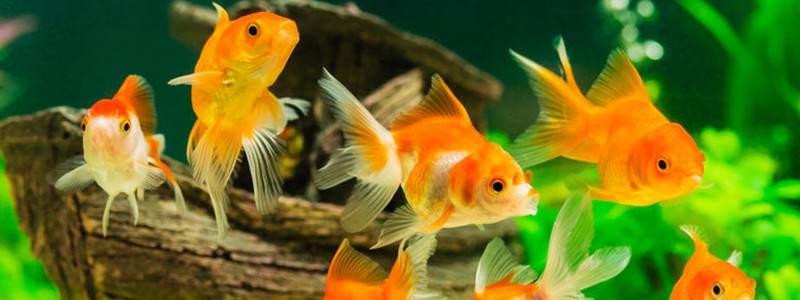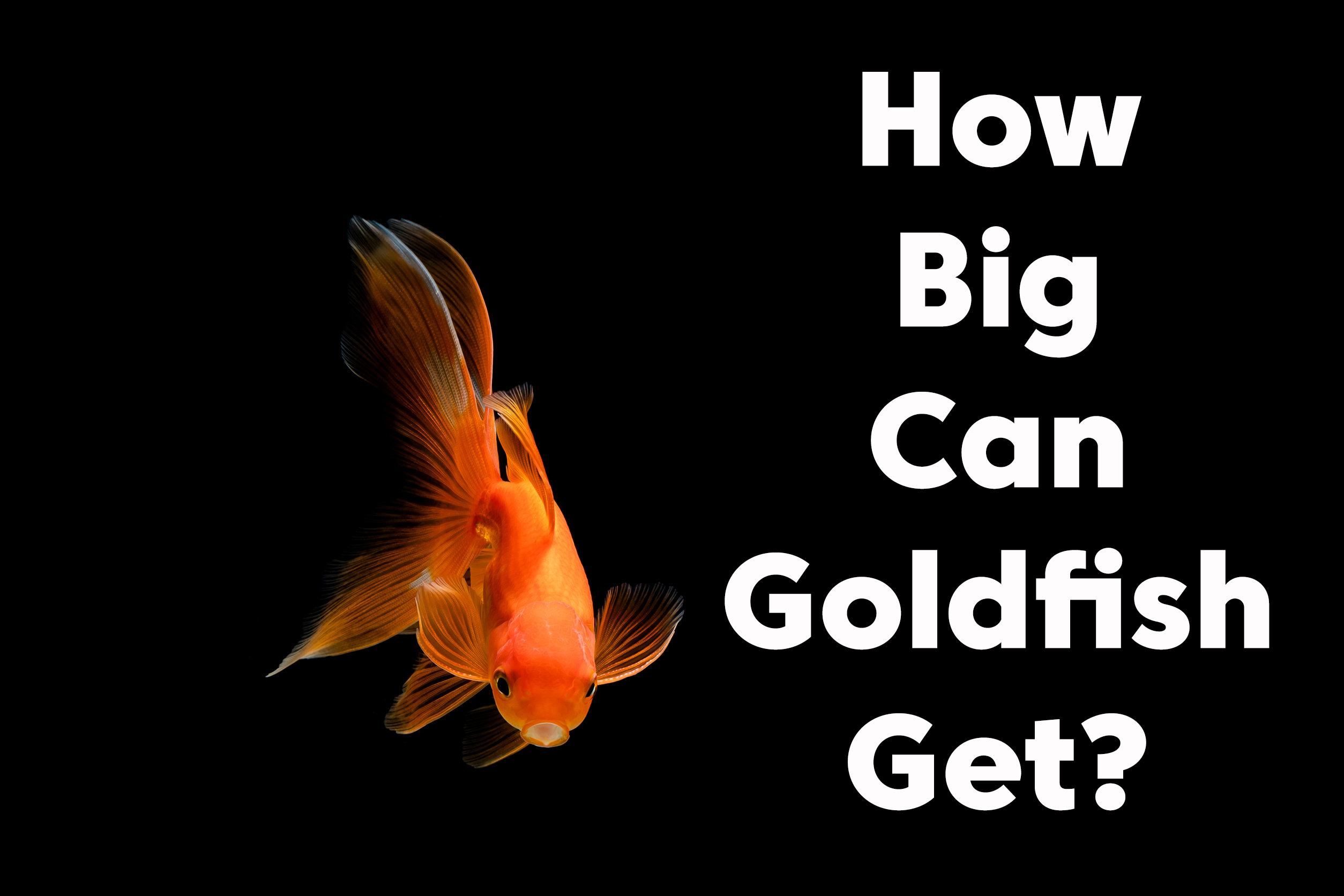There is nothing more terrifying than peering into your fish tank only to discover that your prized goldfish is floating on its side or even on its head. Most people assume that the fish is dead or dying, but this is not always the case. The good news is that you can fix the problem if your fish is swimming on its side.
Why is my goldfish swimming sideways?
If your goldfish is swimming sideways, it may have a condition called Swim Bladder Disorder. The swim bladder is an organ that assists a fish in maintaining balance and an upright swimming position. When the bladder becomes too full or becomes blocked, or the fish has an infection, the swim bladder is unable to function properly. This causes the fish to swim or float on its side.
Over the years I have spoken to many people who have assumed their fish is dead when it appears to be floating belly up. If your goldfish is swimming on its side, there is no need to immediately lose hope. It could be a simple case of Swim Bladder Disorder and if you catch it early enough, you can cure the problem. If it is still breathing, it is probably a case of Swim Bladder Disorder. There is a chance that your fish could recover, with time and the correct treatment. Find out what the symptoms of Swim Bladder Disorder are, what causes it, and how you can help your fish below.
What is Swim Bladder Disorder (Swimming on its Side)?
You might be wondering what Swim Bladder Disorder is and what really causes it. A variety of issues can lead to your goldfish suffering from Swim Bladder Disorder – but regardless of the reasons, the symptoms are always the same/similar. If your fish is swimming sideways, it could have contracted the disorder from an infection (usually from a dirty tank), enlarged organs, constipation, and even over-feeding.
The entire function of the swim bladder is to keep the fish in the correct position. The swim bladder keeps the fish afloat by staying inflated. When the bladder is compressed, it cannot stay inflated which results in the fish swimming on its side. It is important to take action quickly when you notice that it has symptoms of Swim Bladder Disorder. Unfortunately, this is not a problem that will solve itself. And neglecting to treat the fish can lead to death.
Unfortunately, goldfish and betta fish are commonly affected by Swim Bladder Disorder. Genetics seem to play a role as it is thought that the shape of the goldfish makes it a prime candidate for the disorder. Their short round bodies can sometimes lead to the organs becoming compressed (especially when there is over-feeding or constipation at play), which can then result in the swim bladder malfunctioning. You might notice that longer goldfish breeds (with bigger bodies) tend to be less prone to the disorder.
Why Your Goldfish is Swimming Sideways | What Causes Swim Bladder Disorder?
You might wonder what causes Swim Bladder Disorder in the first place. If you think about it, it makes some sense. The goldfish has a tiny body with tiny internal organs. When they become enlarged or if there is any sort of swelling or blockages inside, the organs press against the swim bladder, and then it is unable to do its job. It is the compression of the swim bladder that causes the fish to swim sideways.
In the goldfish, it is the intestines, stomach, and liver that usually become enlarged when there is constipation, infection, or extra air. In most instances, it is because the fish is eating too much, but that is not the only reason. Below are a few causes of organ swelling resulting in Swim Bladder Disorder:
- Consuming air when feeling can make the stomach swell.
- Over-eating affects the liver.
- Constipation is often a result of inferior quality food.
- Cyst formations in the kidneys result in swelling.
- Any organ infection.
Symptoms of Swim Bladder Disorder
If you want to make certain that your goldfish is swimming sideways because of Swim Bladder Disorder, you can keep a lookout for the following symptoms:
- The goldfish consistently floats upside down and rises to the top of the tank.
- The goldfish appears to be swimming with its head pointed downwards.
- The goldfish sinks to the bottom of the tank either on its side or upside down on its head.
- The stomach of the goldfish appears to be swollen and fat.
Signs that your Goldfish Has Swim Disorder Due to an Infection
Unfortunately, you cannot treat Swim Bladder Disorder in the same way as you usually would, if the cause is an infection. The infection would need to be treated first, separately from Swim Bladder Disorder treatment. If your goldfish is swimming sideways, has clamped fins, and appears to be somewhat shaky, it is a sign that there is an infection. What can you do if the goldfish has Swim Bladder Disorder from an internal infection? The first step is to clean the tank and ensure that the water is suitable for the health of your fish. The second step is to consider giving your goldfish a broad-spectrum antibiotic.

How to Prevent Swim Bladder Disorder
Implement a tank cleaning schedule to keep the water clean
A fish tank with dirty water and algae can lead to infections, so it is important to put some effort into keeping things clean for your pet. You can keep the tank clean by following a regular cleaning schedule. You can also buy a water test kit so that you can keep an eye on the health of the water each week. It is highly recommended to add aquarium salt to the tank after every cleaning process. This helps to fight bacteria.
Keep the water temperature constant
Goldfish do not particularly like cold water. The water should never be cold, so try to keep a constant temperature for the health of your fish. When the water is too cold or the temperature fluctuates, it can slow down digestion. You should keep your tank water at 70 degrees Fahrenheit consistently.
Limit feeding to a smaller amount
Fish will eat as much as you give them, but it does not mean that they actually need the amount of food you are feeding them. You should only be feeding your goldfish a small pinch of food once per day. If you are careful not to over-feed your fish, the chances of Swim Bladder Disorder will be greatly reduced.
Dampen fish food before feeding
Unfortunately, when dry fish food is floating on the surface of the fish tank water, the goldfish has to gulp to get it. When a goldfish gulps food, it leads to an excess intake of air. This leads to bloating of the stomach and compression of the swim bladder. When you dampen or soak the food before feeding, it will sink into the water so that the goldfish can eat it without having to take in the air.
What to do When Your Gold Fish Swims Sideways | Treating Swim Bladder Disorder
There are a few things that you can do yourself to help cure Swim Bladder Disorder. Try the following:
Stop feeding for a short while
Do not worry – this is just a short-term fast. You should give your fish at least 3 days break from regular feeding. This is a good first step because the most common reason for Swim Bladder Disorder is overeating. It is important to only do this for 3 days. Any longer, and you could be harming your fish. Keep a record of the changes. If your fish starts to shrink and swim more normally, then overfeeding may be the cause of the problem.
Turn up the heat – don’t let your sickly fish get cold
Do not go overboard with this one, but you can increase the temperature of your tank’s water slightly. When the water is cold, digestion can be slowed down. During Swim Bladder Disorder treatment, it is okay to raise the temperature to 70 or 80 degrees Fahrenheit.
Add a bit of fiber to the diet – too much dry food can lead to constipation
It might seem a little strange, but cooked peas can do a world of good for your constipated goldfish thanks to the amount of fiber they contain. You can prepare frozen peas for your tank. Cook the peas and peel them before feeding them to the fish. Keep it to a minimum – no more than 1 or 2 peas per day. Peas are high in fiber so can help to get the system working. It is important that you do not overcook the peas. They need to be soft, but not mushy. It can take a few days on a pea diet before your goldfish starts to appear normal again. Once it is back to normal size and swimming normally too, you can return to feeding it with flakes, but do so sparingly.
Last Words
When a goldfish swims on its side, it is almost always a sign of Swim Bladder Disorder. Take the time to try the steps above or consult with your local vet to ensure that your goldfish recovers quickly.





